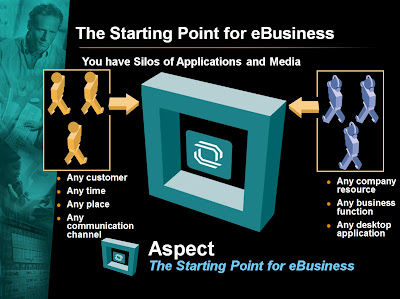In 2000, Cisco
entered the communications marketplace by marketing the hell out
of something new, VoIP. Legacy vendors
were caught wholly off guard with immature products they’d planned on strengthening
and releasing at leisurely pace. Cisco
upended that strategy sending Alcatel, Avaya and Rolm scrambling. The result
being that customers were shown a lot of famously bad and short-lived products
in the first few years of this new century.
Yes,
the first releases of CallManager were feature poor and fantastically, famously buggy, but VoIP was
real innovation and Cisco capitalized on the technology’s promise. As an
innovator and teacher Cisco thrived, eventually becoming #1 (although to be
fair, it took years longer than Mr. Chambers expected).
We’re in the
second decade of VoIP, nearing a decade of enterprise chat and presence, and bringing
up the rear, SIP and video are approaching their own half-decade marks. But the market is inexplicably swooning over Microsoft
Lync, a largely partner-driven “good enough” PBX with a huge installed base of Microsoft
Office and LCS/OCS users. Where’s the innovation? Where’s the “new.”
I also
attended the Microsoft “Living with Lync” session at Enterprise Connect like NoJitter’s
Kevin Kieller who took Twitter umbrage at my being far less bedazzled. To borrow from the withering Miranda Priestly
in The Devil Wears Prada, “PBX
consolidation, least cost routing, SIP trunking: Groundbreaking.” (In fact Microsoft’s banging
on about such meat-and-potatoes features is, to me, tacit admission of deficit.)
I simply don’t
get excited by reference customers who standup and shout, “it works” with the subliminal
message being uniqueness. It’s also
worth noting that I’m similarly unimpressed with ovens that get hot or toddlers
who walk. As I opined, doing what it
says on the label isn’t cause for celebration.
You could
say Lync’s only true “innovation” has been their use of their former partners (current
competitors) to implant LCS/OCS “eggs” that are now hatching to consume voice systems
from the inside. But that’s not
innovation, that’s strategy. And so far,
that’s been enough.
Just so we’re
clear:
- Will Lync voice continue to grow quickly? Yes, there’s a lot of low-hanging Microsoft fruit.
- Are competitors, crippled by economic forces and bad management, boosting Lync? Yes, just as a flush Cisco benefitted from the telecom meltdown in the early 2000s.
- Will Microsoft Lync be a dominate player for the next decade? Yes, but an unseen competitor will challenge them eventually too.
- Has any of Lync voice’s success been the result of any real innovation? No, not yet.
So by all
means celebrate their growth and strategy. But you won’t see me excited by reference
customers doing, as Stephan King wrote “SSDD.”
